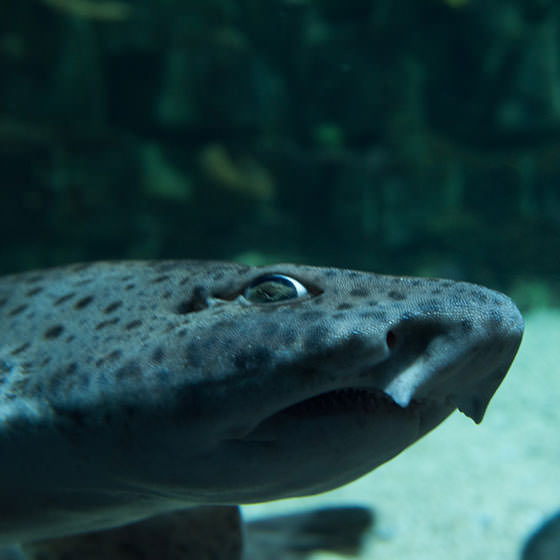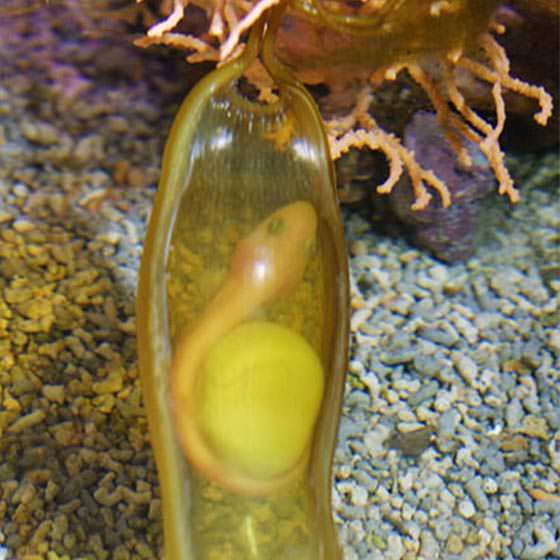Environment and food
This little shark, common along our coasts, usually lives its life on the ocean floor, by night hunting invertebrates (like crustaceans, molluscs and squid) and various other small bottom-dwelling fish.

This little shark, common along our coasts, usually lives its life on the ocean floor, by night hunting invertebrates (like crustaceans, molluscs and squid) and various other small bottom-dwelling fish.

The oviparous (egg-laying) nursehound mates and then releases rectangular eggs protected by a transparent horned case.
Thanks to long tendrils extending from each corner, these eggs, nicknamed ‘mermaid’s purses’, latch onto algae, sea fans and rocks. 100 to 250 days later, depending on the temperature of the ocean, the case breaks open, releasing a young nursehound about 10 cm long.
The nursehound is harmless to humans.

At the fishmonger's stall, you can find the nursehound under the broader name of 'catshark', sold with the skin removed and its salmon-coloured flesh exposed.